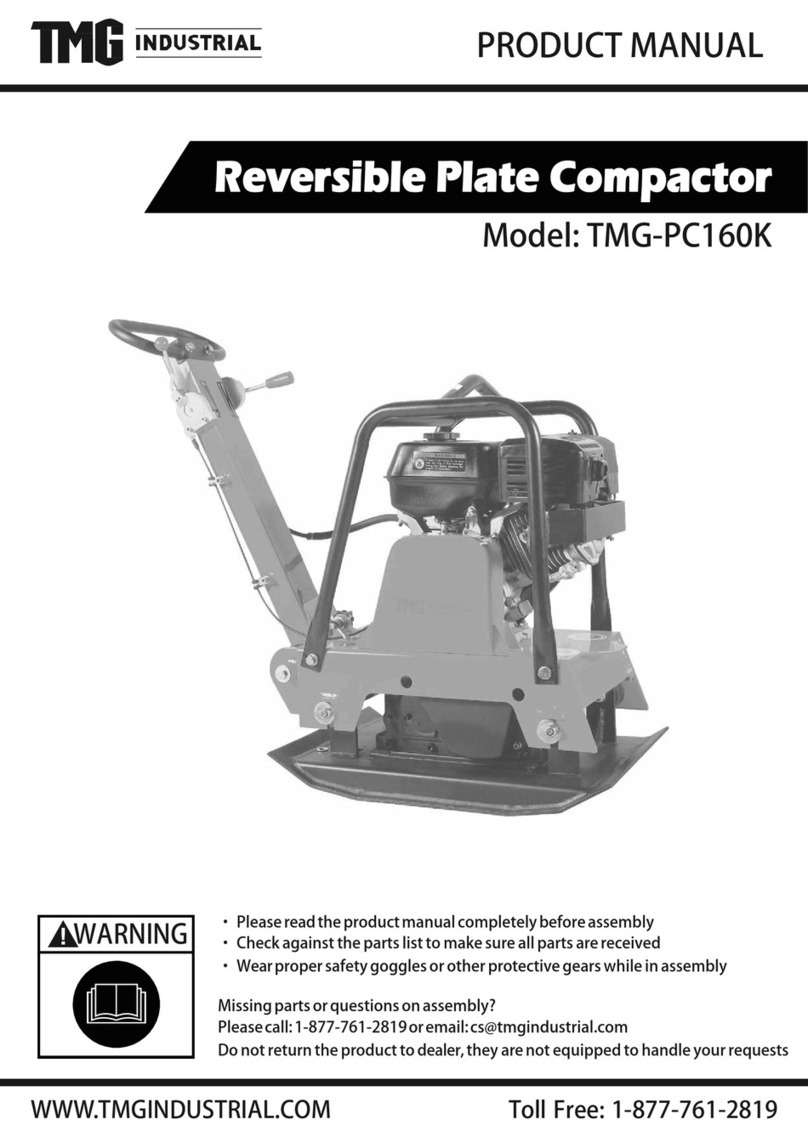This Ammann machine has been built according to the state of
the art in compliance with the pertinent rules. Nevertheless,
these machines can still constitute a hazard to persons and
property if:
•not used for the intended purpose,
•not operated by suitably qualified and instructed personnel,
•modified or converted in an improper manner,
•the pertinent safety regulations are not observed
For this reason, any person entrusted with the operation, main-
tenance or repair of the machine is obliged to read and follow
the operating instructions and particulary to observe the safety
regulations. If necessary, it must be confirmed by the signature
of the company using the machine.
Furthermore, the following must be made known and observed:
•pertinent regulations for the prevention of accidents,
•generally recognised safety rules,
•country-specific regulations
Normal use
The machine is suitable for all compaction jobs in civil works and
road construction. All ground materials such as sand, gravel, sludge,
crushed stone, asphalt and composite sett paving can be com-
pacted.
Improper use
The machine can constitute hazards if not used by instructed
personnell or for other than the intended purpose.
Weighing down and riding on the machine is forbidden.
The machine must not be used on slopes with a gradient of more
than 25° (Honda 20°).
Do not use the machine on hard concrete, set asphaltic surfaces,
highly frozen or unstable surfaces.
Who is allowed to operate the machine?
Only suitable qualified, instructed and authorised persons over 18
years of age may operate the machine.
In variance from this, minors can be employed, as long as it is neces-
sary to their training objective and their protection is assured by a su-
pervisor.
Persons under the influence of alcohol, medication or drugs must not
operate, maintain or repair the machine.
Maintenance and repairs, in particular of hydraulic systems and elec-
tronic components require special knowledge and must be carried
out only by skilled persons (mechanics specialising in construction
and agricultural machinery).
Conversions and modifications to the machine
Unauthorised modifications and conversion of the machine are not
permitted for safety reasons.
Spare parts and special equipment not delivered by us are also not
approved by us. The installation and/or the use of such parts can
also have a detrimental effect on the operating safety.
The manufacturer disclaims all liability for any damage resulting from
the use of non-original parts or special equipment.
Safety information in the operating and maintenance
instructions
The following signs and designations are used in the manual to des-
ignate instructions of particular importance:
Transporting the machine
Only load and transport the machine as specified in the operating in-
structions.
Only use suitable means of transport and hoisting with sufficient
loading capacity!
Attach suitable slinging means to the points of attachment pro-
vided.
Secure the machine to prevent it from tilting or slipping.
It is highly dangerous to walk or stand under suspended loads.
Secure the machine on transport vehicles to prevent it from rol- ling,
slipping and tilting.
Starting the machine
Prior to starting
Familiarise yourself with the operating and control elements and the
mode of operation of the machine and the working environ- ment.
This includes, e.g. obstacles in the working area, loading capacity of
the ground and the necessary safety provisions.
Use personal protective equipment (safety footwear, hearing protec-
tors, etc.).
Check to ensure that all safety devices are firmly in place.
Do not start the machine if instruments or control devices are faulty.
Starting
For machines with handstart, only use the safety cranks tested by the
manufacturer, and precisely follow the operating instructions of the
motor manufacturer.
To crank-start diesel motors; Important is the correct position to the
motor and the correct hand position on the crank.
The handcrank must be turned with maximum force until the motor
starts, otherwise the crank can rebound.
Precisely follow the starting and stopping procedures specified in the
operating instructions and observe indicator lights.
Only start and operate machines with an electrical starter from the in-
strument panel.
Starting and operation of the machine in potentially explosives atmo-
spheres is forbidden!
Starting with battery junction cables
Connect «positive» to «positive» and «negative» to «negative»
(earthing lead). Always connect the earthing lead last and discon-
nect first! Incorrect connection will cause serious damage to the
electrical system.
Starting in enclosed spaces, tunnels, mines or deep ditches
Engine exhaust gas are highly dangerous!
For this reason, when operating the machine in enclosed spaces,
tunnels, mines or deep ditches, it is important to ensure that there is
sufficient air to breath (see UVV «Construction work», BGV C22,
paragraphs 40 and 41).
1. Safety regulations
37




































